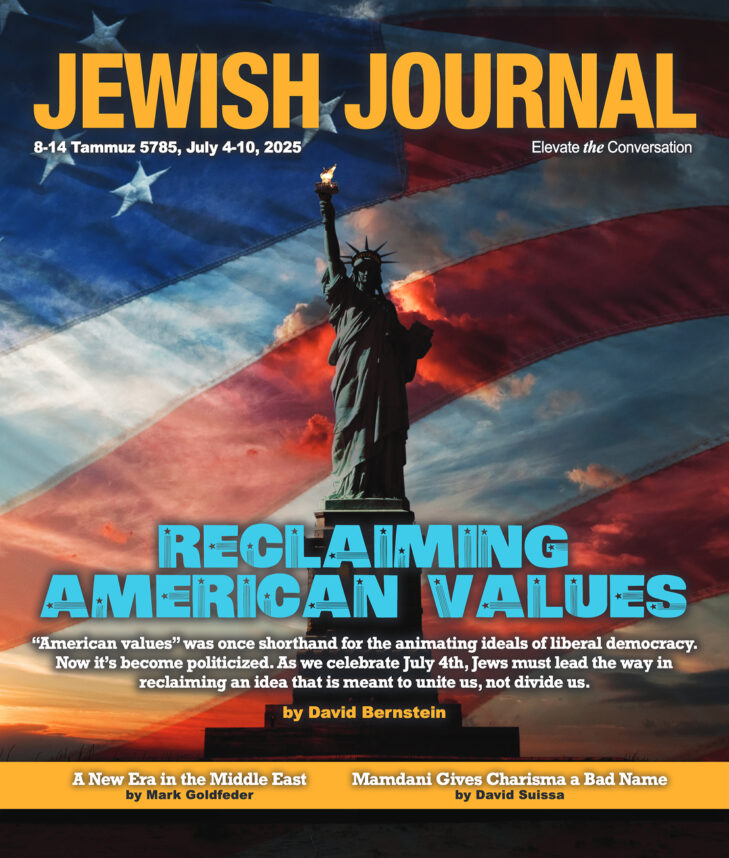When Adam Bergman researched colleges toward the end of his senior year at Milken High School, he looked very closely at the quality of their soccer teams and not so closely at the size of their Jewish populations.
"I don’t consider myself religious at all. I have never chosen a faith," said Bergman, the son of a Jewish father and a non-Jewish mother. As he approaches his freshman year on the soccer team at UC Santa Cruz, Bergman is not looking to have a Jewish experience.
Bergman, however, is not alone in his religious neutrality. "America’s Jewish Freshmen," a survey recently released by the UCLA Higher Education Research Institute, reveals a surprisingly low level of Jewish identification among students raised in interreligious families. The study, which asked incoming college freshmen to identify their religious preference, found that 40.2 percent of students raised in families where only the mother was Jewish identified their religion as "none," and 40 percent raised in families where only the father was Jewish identified their religion as "none." Of the students who were raised by two Jewish parents, only 6.2 percent claimed "none" as their religious preference.
"America’s Jewish Freshmen" profiles this rapidly growing segment of the student population who, like Bergman, have never chosen a faith, but have at least one Jewish parent. The study labels this category of students NR/JP (no religious preference/at least one Jewish parent), and compares them to self-identified Jewish students in areas such as their academic and family backgrounds, degree and career aspirations, and leisure activities. The study also compares Jewish and non-Jewish students in the same categories.
Hillel: The Foundation for Jewish Campus Life sponsored "America’s Jewish Freshmen," in hopes of assisting Jewish educators to address student needs.
The study was conducted by Linda J. Sax, director of the Cooperative Institutional Research Program (CIRP) at UCLA, and is based on data from CIRP’s Freshmen Survey, which has tracked more than 10 million students at more than 1,600 baccalaureate institutions for the past three decades. "America’s Jewish Freshmen" represents the first analysis of the CIRP survey’s Jewish sample, both by analyzing the 1999 CIRP Freshmen Survey and comparing it to the past 30 years of data.
"There’s a lot of stereotypes about Jewish students, but I wanted to see in reality how they compare," Sax said.
The study compares the responses of 8,000 Jewish students, 232,000 non-Jewish students, and 2,000 NR/JP students. It gives insight into one finding of the CIRP Freshmen Survey, which shows that while 5.4 percent of the student population identified themselves as Jewish in 1970, the figure dropped to 2.6 percent in 2001.
Among other things, "America’s Jewish Freshmen" found that NR/JP students were more often raised in homes where their parents were divorced or separated, compared to Jewish students. NR/JP students were also more likely to earn B averages in high school and less likely to earn A averages. They were more likely to aspire toward doctorate or masters in education degrees, but were less likely to aspire toward medical degrees.
"This is one category that Hillel will try to engage on campus," said Jay Rubin, executive vice president of Hillel. Rubin emphasized the importance of Jewish Campus Service Corps fellows reaching out to this group of students in particular, rather than waiting for them to come to Hillel. The survey notes that "although NR/JP claim to have no religious affiliation, Hillel looks to engage them in Jewish campus life because they have at least one Jewish parent and have not affiliated with any other religion." Additionally, despite differences, NR/JP students typically resembled Jewish students more than they resembled non-Jews.
"These students lack a traditional Jewish home life. We have an important opportunity, maybe an obligation, to provide them with the Jewish experiences that they failed to get at home and to provide them with a warm environment that will inspire them Jewishly…. We have to create programming with that in mind," said Rabbi Chaim Seidler-Feller, director of UCLA Hillel.
"We’re at the beginning stages of learning what the research tells us," Rubin said. He does, however, offer several suggestions for program implementation based on some of the statistics, which he derives mainly from the part of the survey comparing Jewish and non-Jewish students. For instance, Jewish students have a stronger intention to participate in community service while in college. Rubin suggests "alternative spring breaks," such as one where students from USC Hillel helped build health clinics in Uruguay and Buenos Aires.
Additionally, the study found that Jews are more likely than non-Jews to be interested in business, medicine, law and the arts. Rubin suggests Hillel internship and mentor programs and highlights several arts programs, including an a capella choir.
While the survey will undoubtedly be a valuable tool in aiding efforts of Jewish educators, Sax emphasizes that the data does not represent college students, but rather students who are about to enter college. She hopes that the study is a steppingstone to follow-up studies. "The ultimate goal is to see how they [Jewish students] develop throughout college," Sax said.

































 More news and opinions than at a Shabbat dinner, right in your inbox.
More news and opinions than at a Shabbat dinner, right in your inbox.